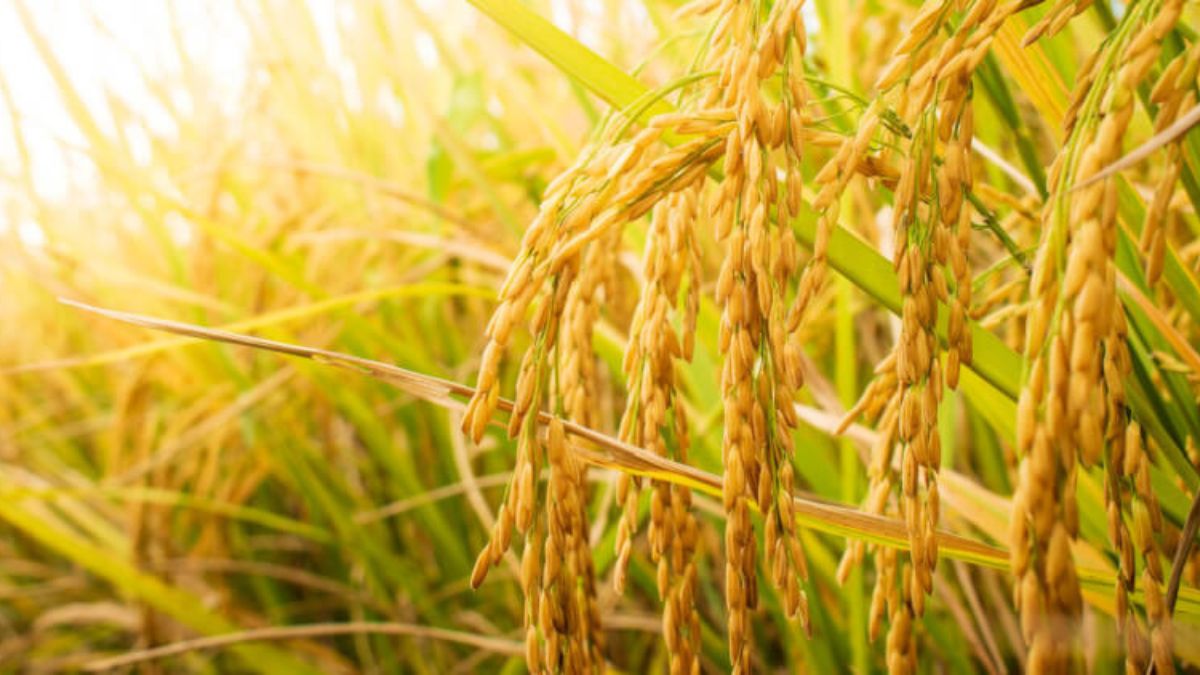Tags
Natural Farming VS Organic Farming: 100% Complete Comparison

Natural Farming Vs Organic Farming: Imagine a peaceful countryside where fields thrive with bountiful harvests, untouched by synthetic chemicals and coexisting in harmony with the natural world. This vision summarizes the common goals of natural and organic agriculture. In an era marked by concerns about conventional agricultural methods’ environmental and health impacts, these two methods have emerged as sustainable alternatives.
Let’s take a deep dive into the fields of natural farming and organic farming, where we will explore their definitions, differences, similarities, advantages and disadvantages. Distinguish between natural farming and organic farming.
Subhash Palekar
Notably, Subhash Palekar, a Maharashtrian agriculturist and Padma Shri recipient has played a pivotal role in India’s agricultural landscape. He is widely recognized as the father of zero tillage in India. In the mid-1990s, he developed zero tillage as an innovative alternative to the Green Revolution’s methods driven by chemical fertilizers, pesticides, and intensive irrigation.
His contributions have reshaped the way Indian farmers approach sustainable agriculture, emphasizing minimal external inputs and a deep understanding of natural processes such as natural farming and organic farming, etc.
Natural farming represents an agricultural philosophy that reflects the wisdom of nature itself. Originating in Japan through the pioneering work of Masanobu Fukuoka and Mokichi Okada, it is often hailed as “natural agriculture” or “do-nothing agriculture.” At its core, natural agriculture strives to match natural processes, reduce human intervention, and minimize external inputs such as chemical fertilizers, pesticides, and herbicides. Instead, it relies on ecological principles to promote biodiversity, preserve soil health, support plant and animal health, and improve crop yields.
On the other hand, Organic farming is a holistic agricultural system meticulously designed to optimize the productivity and ecological vitality of agricultural ecosystems. This approach seamlessly integrates soil microorganisms, plant life, livestock and human activity. Organic farming prioritizes the use of organic materials such as compost, cover crops and natural pest control techniques while avoiding the use of synthetic chemicals. It emphasizes soil health, biodiversity conservation and the adoption of environmentally friendly agricultural practices.

Natural farming and organic farming have become crucial components of sustainable agriculture in India, each with its unique characteristics and historical roots. Dr. Subhash Palekar, who is affectionately known as the “Father of Zero Tillage” in India, has played a significant role in shaping the principles of natural farming. His focus on reducing synthetic inputs, enhancing soil health, and promoting ecological harmony has made a profound impact.
On the other hand, organic farming in India is defined by its strict principles, emphasizing the exclusion of synthetic chemicals and the use of approved organic inputs for crop cultivation and livestock management. Environmental conservation, improved soil fertility, and the production of safe and nutritious food are among the primary goals of organic farming in India, aligning with the recognized advantages of organic farming practices.
In the Indian context, natural farming encompasses a diverse range of techniques, including minimal soil disruption, crop rotation, intercropping, and the use of indigenous resources such as cow dung and cow urine for natural fertilizers. Its essence lies in the creation of self-sustaining ecosystems while minimizing reliance on external inputs. This approach distinguishes it from organic farming, which allows for the use of approved organic inputs.
The primary difference between natural farming and organic farming lies in their approach to external inputs. Natural farming completely eschews synthetic and external inputs, while organic farming incorporates approved organic inputs as part of its practices. A noteworthy subset of natural farming in India is Zero Budget Natural Farming (ZBNF), which highlights minimal external input usage and relies on a unique combination of techniques to improve soil health without requiring additional farming budgets.
Despite these distinctions, both natural and organic farming offers numerous advantages to Indian agriculture. They play critical roles in mitigating environmental pollution, ensuring consumer health, and promoting sustainable agricultural methods. These approaches converge in their shared commitment to environmental preservation, food safety, and the well-being of rural communities in India.
In conclusion, natural farming and organic farming in India represent two distinct yet complementary approaches to sustainable agriculture. While natural farming, with its diverse range of techniques and Dr. Subhash Palekar’s influence, emphasizes the exclusion of external inputs, organic farming allows for the use of approved organic inputs. Together, they contribute to the betterment of Indian agriculture and society by championing environmental sustainability and the production of safe, healthy food.
Organic Farming
Organic farming is an agricultural approach and system that focuses on cultivating crops and raising livestock in a manner that is environmentally sustainable and free from synthetic chemicals. It emphasizes the use of natural and organic materials such as compost, cover crops, and biological pest control methods while avoiding the use of synthetic fertilizers, pesticides, herbicides, and genetically modified organisms (GMOs).
Organic farming places a strong emphasis on soil health, biodiversity conservation, and ecological balance within the farming ecosystem. It aims to produce food and agricultural products in a way that is healthier for consumers, promotes environmental sustainability, and supports the well-being of both plants and animals involved in the agricultural process. Organic farming often involves adherence to specific standards and regulations to ensure the authenticity of organic products.

Advantages of organic farming
Organic farming has several advantages, especially in the Indian context:
- Reduce chemical residue: Organic farming significantly reduces pesticide and chemical residues in soil and produce, resulting in safer and healthier food.
- Resource efficiency: It advocates the efficient use of available resources, optimizing the use of locally abundant inputs such as organic waste and biological agents.
- Economic prosperity: Organic products often have very high prices on the market, potentially increasing farmers’ income.
- Environmental conservation: It plays a pioneering role in preserving soil biodiversity, reducing water consumption and greenhouse gas emissions.
- Healthy foods: Organic foods are known for their high nutritional value and superior taste.
- Biodiversity: Organic farms typically support a richer diversity of plants, animals, insects and microorganisms.
Natural Farming
Natural farming is an agricultural method that seeks to mimic and work in harmony with the natural processes found in ecosystems. It is often described as “the natural way of farming” or “do-nothing farming.” In natural farming, the primary goal is to reduce human intervention and reliance on external inputs such as synthetic chemicals, fertilizers, and pesticides. Instead, it relies on ecological principles to foster biodiversity, soil health, and overall agricultural sustainability.

Advantages of Natural Farming
- Sustainability: Natural farming relies on ecological principles and minimizes external inputs, making it a sustainable and regenerative agricultural practice.
- Reduced Chemical Use: It avoids using synthetic chemicals such as fertilizers and pesticides, leading to cleaner, chemical-free food production.
- Cost-Effective: Natural farming often requires fewer external inputs and reduces the financial burden on farmers, making it cost-effective.
- Improved Soil Health: The practice encourages the natural decomposition of organic matter by microbes and earthworms, enriching soil fertility and structure.
- Enhanced Biodiversity: Natural farming promotes biodiversity in the agricultural ecosystem, fostering the coexistence of various plant and animal species.
- Water Conservation: It typically uses water-efficient methods and reduces water consumption, contributing to water conservation.
- Low Environmental Impact: Natural farming results in lower pollution and greenhouse gas emissions, reducing its environmental impact.
- Local Adaptation: It is adaptable to local conditions, allowing farmers to work in harmony with their specific environment.
- Food Quality: Natural farming often produces healthier and more nutritious food due to reduced chemical residues.
- Reduced Stress on Ecosystems: By mimicking natural processes, natural farming puts less stress on ecosystems, promoting ecological balance.
- Health Benefits: Food produced through natural farming is often perceived as healthier due to its reduced chemical content.
- Resilience: Natural farming systems tend to be more resilient to environmental changes and climatic variations.
Similarities between Natural farming and Organic farming
Despite their differences, natural agriculture and organic agriculture also have some things in common:
- Contains no chemicals: Both methods avoid the use of synthetic chemicals and favour healthier, pesticide-free agricultural production.
- Biodiversity: Both approaches emphasize the fundamental importance of biodiversity in agricultural ecosystems.
- Soil health: Both prioritize soil health as the foundation of sustainable agriculture.
- Environmental benefits: Both help reduce environmental pollution and enhance ecosystem health.
The difference between Natural farming and Organic farming | Natural Farming Vs Organic Farming
Although natural farming and organic farming share the common goal of sustainable, chemical-free agriculture, they differ significantly in key aspects:
| Particular | Organic Farming | Natural Farming |
| External Inputs | Permits the use of organic fertilizers like compost and manure. | Strictly avoids external inputs, including organic fertilizers. |
| Tillage and Weeding | Often involves practices like plowing, tilling, and weeding. | Often considered a low-cost method due to its reliance on local biodiversity. |
| Microbial Action | Relies on the addition of organic materials and manures. | Encourages microbial action and decomposition on the soil surface. |
| Regulation | Subject to specific guidelines and regulations for organic certification. | Generally less regulated. |
| Cost | Can be more expensive due to the need for bulk manures. | Often considered a low-cost method due to reliance on local biodiversity. |
Government initiatives:
The Government of India has introduced various initiatives to promote both organic and natural farming practices in the country. These initiatives are designed to support sustainable and environmentally friendly agricultural practices. Here are some key Indian government initiatives:
Paramparagat Krishi Vikas Yojana (PKVY):
This scheme encourages the adoption of organic farming practices and the certification of organic produce. It promotes the use of traditional and indigenous methods to reduce the reliance on synthetic chemicals.
National Mission on Sustainable Agriculture (NMSA):
NMSA focuses on promoting sustainable agricultural practices, including organic farming, to make agriculture more resilient to climate change. It supports the adoption of organic inputs and techniques.
Mission Organic Value Chain Development for North Eastern Region (MOVCDNER):
This mission aims to develop certified organic production in the northeastern region of India. It focuses on creating value chains for organic products and increasing organic farming adoption.
Rashtriya Krishi Vikas Yojana (RKVY):
While not exclusively for organic farming, RKVY provides financial assistance to states and union territories to promote agricultural development, which can include organic and natural farming practices.
Zero Budget Natural Farming (ZBNF):
Although not a government initiative, ZBNF, popularized by Subhash Palekar, has gained significant support and recognition in India. It encourages natural farming practices with minimal external inputs.
Pradhan Mantri Krishi Sinchayee Yojana (PMKSY):
PMKSY focuses on efficient water resource management in agriculture, including practices that align with organic and natural farming principles.
Green India Mission:
This mission aims to increase forest and tree cover, promoting biodiversity and sustainability, which can indirectly benefit natural farming practices.
These initiatives reflect the Indian government’s commitment to promoting environmentally friendly and sustainable farming practices like organic and natural farming. They provide support, financial incentives, and training to farmers to adopt these methods, ultimately benefiting farmers and the environment.
Zero Budget Natural Farming (ZBNF)
Zero Budget Natural Farming (ZBNF) is a farming methodology that has gained significant popularity in India, especially in recent years. It was popularized by Subhash Palekar, an agricultural scientist and advocate for sustainable farming practices. ZBNF is focused on the concept of eliminating the use of synthetic chemical inputs and minimizing external expenses while focusing on holistic and nature-based farming techniques.
The key principles and features of Zero Budget Natural Farming (ZBNF):
| Particular | Description |
| Core Principle | Eliminating the need for external inputs and expenses. |
| Primary Resources | Cow dung, cow urine, crop residues, and local microorganisms. |
| Soil Health Improvement | Continuous mulching, no-tillage or minimal tillage. |
| Crop Diversity | Encourages intercropping for a variety of crops. |
| Reduced Water Dependency | Focuses on efficient water use and conservation. |
| Chemical-Free Agriculture | Eliminates synthetic chemicals like fertilizers and pesticides. |
| Financial Sustainability for Farmers | Enables self-sufficiency without extra costs. |
| Environmental Benefits | Promotes biodiversity, reduces pollution, and conserves resources. |
This chart provides a concise overview of the fundamental principles and features that define Zero Budget Natural Farming and its contribution to sustainable and eco-friendly agriculture in India.
Overall, Zero Budget Natural Farming emphasizes sustainability, environmental health, and farmer well-being. It has gained recognition for its potential to improve soil fertility, reduce production costs, and produce chemical-free, nutritious food. Many farmers, especially in India, have adopted this approach as a means to address the challenges of conventional farming and promote a more sustainable agricultural system.
Conclusion:
Both natural farming and organic farming stand as sustainable agricultural models with a shared commitment to reducing chemical inputs and fostering ecological harmony. These approaches have demonstrated their remarkable ability to safeguard soil health, uphold biodiversity, and mitigate pollution, all while contributing to the production of healthier food options.
For consumers, this means reduced exposure to synthetic chemicals commonly found in conventionally grown produce. On the economic front, farmers can potentially reap higher prices for organic products, thus improving their livelihoods. Moreover, these agricultural methods enhance access to nutritious, chemical-free foods, preserving traditional farming practices and knowledge.
From an environmental perspective, the benefits are equally significant. These practices work towards diminishing soil erosion and enhancing soil quality, resulting in more sustainable land use. Efficient water conservation and reduced water pollution contribute to a healthier aquatic ecosystem. Natural and organic farming also play a pivotal role in promoting biodiversity, benefiting valuable insects and microorganisms. Furthermore, their role in mitigating carbon and nitrogen emissions is essential in combating climate change.
Additionally, by reducing the reliance on fossil fuels for chemical production and transportation, these practices offer a more sustainable and eco-friendly path for agriculture. In essence, both natural and organic farming represent a positive step towards a more harmonious relationship between agriculture and the environment, fostering long-term agricultural sustainability and protecting human health.
In short, the choice between natural and organic farming depends on local circumstances, the farmer’s inclinations, and the exact goals of agricultural production. While both approaches possess distinctive attributes and benefits, their overarching goal is the creation of a sustainable and harmonious synergy between agriculture and the environment.
The ascent of initiatives such as Zero Budget Natural Farming (ZBNF) in India, coupled with the global expansion of organic farming, underscores the burgeoning realization of the significance of sustainable agriculture. These methodologies offer a path forward in addressing the challenges of nourishing an ever-expanding global populace while safeguarding the health of our planet.
As we forge ahead, the key lies in an unceasing commitment to research, development, and the adoption of practices that amalgamate the finest facets of natural and organic farming. This amalgamation holds the potential to foster a resilient and environmentally conscious agricultural system. Whether traditional techniques like natural farming or certified organic practices, the future of agriculture promises not only healthier diets but also improved livelihoods for farmers and relationships more sustainable between agriculture and the environment.
https://timesofagriculture.in/natural-farming-vs-organic-farming-compare/Published Date: October 30, 2023






